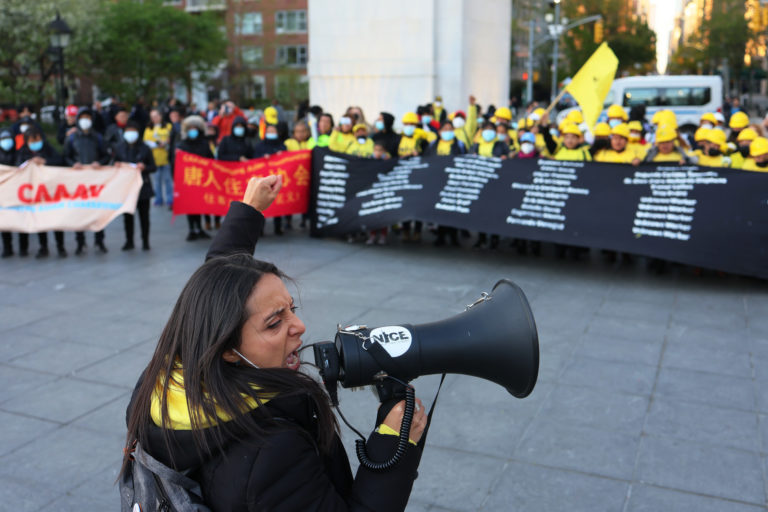
Minnie Che is a student at Harvard Law School.
According to a study by Professor Doyne Farmer at the University of Oxford, the United States employment rate is likely to drop 24% in the near future, accompanied by a 17% drop in wages and 22% drop in economic activity due to covid-19. The impact of the pandemic will be most heavily felt by the bottom quarter of income earners, who will risk 42% loss in employment, while the top quarter of earners risk only a 7% drop in employment. In performing this study, the Oxford team looked at specific occupations in the US economy to assess which could be performed remotely during the national lockdowns and which were considered “essential,” which could remain open during this time. With these data points, they were able to construct a model of how social distancing measures would impact the economy. In addition, the study also accounts for industries that are experiencing much lower demand during the crisis, namely airline and service industries. The prediction is that the US economy will experience a greater shock as a result of this pandemic than it did during the Great Depression.
On the note of which populations are most vulnerable during this time, women seem to be harder hit than men during this crisis. Women make up two-thirds of the healthcare workforce globally, accounting for 85% of nurses and midwives and 90% of long-term care workers. Women also shoulder much of the unpaid work brought about by school and childcare center closures. Further, reports suggest that during circumstances of lock and confinement, the rate of domestic violence increases. The pandemic is affecting female-dominated industries the most, including air travel, tourism, and retail. Women make up approximately 52% in the food and beverage industry and 60% in hospitality services. This data can inform policy responses to address the impact that covid-19 may have on employment, paid sick leave for parents, and other unemployment benefits.
Another group of employees at risk are fashion models, particularly models of color. Because models have unpredictable working conditions and often one-off jobs, they are independent contractors and often do not have the same legal protections as employees. These days, as advertisements have been reduced, runway shows canceled, and photoshoots postponed due to their non-essential nature, two-thirds of models are concerned about being able to pay for housing and about half say they are currently owed money from their agencies but haven’t been paid. This harsh reality is affecting black models more heavily, who are more worried about being able to afford basic necessities and feel uncomfortable speaking up lest they be labelled as an “angry black woman.” While the workers can apply for unemployment, the labor department is overwhelmed with applications that can take months to process.
On Tuesday, President Trump announced new restrictions on permanent residency in the United States. A temporary 60-day ban on most green cards will be imposed, as early as Wednesday, to protect work opportunities for Americans who are currently unemployed because of the crisis. The policy would close entry to thousands of people looking for work or family reunification in the United States, and it can be extended “based on economic conditions at the time.” This will affect workers with green cards granted on family-based petitions, 50,000 permanent residency slots annually, and workers who apply for green cards through employers. Because the new restriction does not affect H-1B and other non-immigrant visas, it is doubtful that this would achieve its purpose of helping American workers, who demand higher salaries than foreign workers.
The government’s Paycheck Protection Program promises business owners loan forgiveness if they retain or hire workers, providing $349 billion for the small business loan program. On Tuesday, the Senate approved another $310 billion in funding for the program after the original funding dried up. Small businesses with 500 or fewer employees can apply for these loans, in addition to businesses in hotel and food service industries with more than 500 employees. For loan forgiveness, companies need to spend at least 75% of the loan on payroll within two months of receiving the money. However, many of the small companies are uncertain whether they will be able to reopen in two months and see little point in rehiring workers only to meet such low demand and have to lay them off again later. Many workers are also better off receiving unemployment checks and will lose them if they are in a position to turn down work. Some critics are pushing to reduce the amount requirement spent on payroll to allow for more money to be spent on rent and other utilities or to grant a longer window of time to rehire workers.






Daily News & Commentary
Start your day with our roundup of the latest labor developments. See all
December 22
Worker-friendly legislation enacted in New York; UW Professor wins free speech case; Trucking company ordered to pay $23 million to Teamsters.
December 21
Argentine unions march against labor law reform; WNBA players vote to authorize a strike; and the NLRB prepares to clear its backlog.
December 19
Labor law professors file an amici curiae and the NLRB regains quorum.
December 18
New Jersey adopts disparate impact rules; Teamsters oppose railroad merger; court pauses more shutdown layoffs.
December 17
The TSA suspends a labor union representing 47,000 officers for a second time; the Trump administration seeks to recruit over 1,000 artificial intelligence experts to the federal workforce; and the New York Times reports on the tumultuous changes that U.S. labor relations has seen over the past year.
December 16
Second Circuit affirms dismissal of former collegiate athletes’ antitrust suit; UPS will invest $120 million in truck-unloading robots; Sharon Block argues there are reasons for optimism about labor’s future.